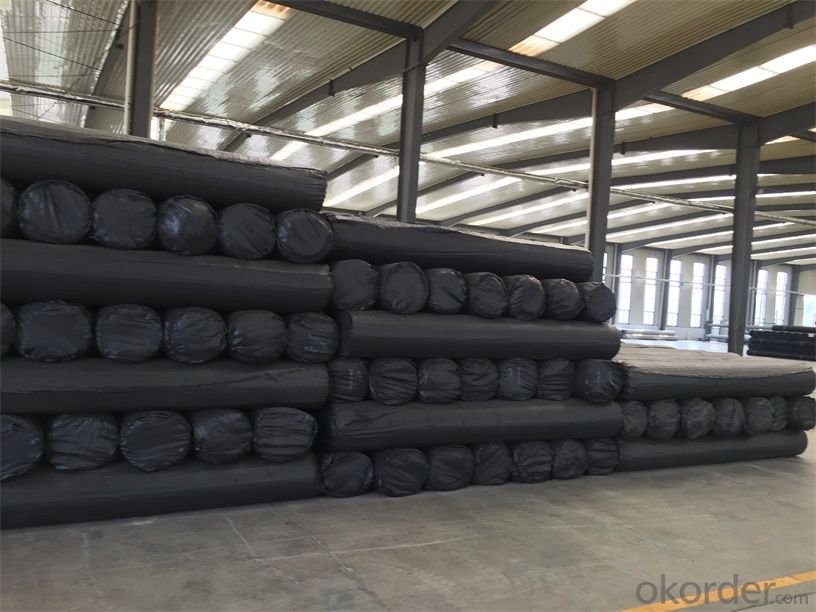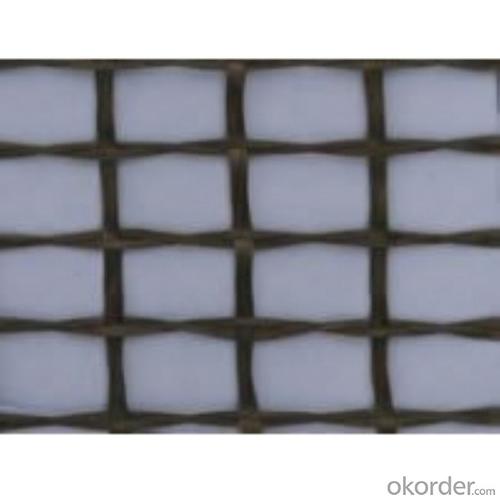Basalt Fiber Grid Reinforcement Usage with CE
- Loading Port:
- Shanghai
- Payment Terms:
- TT OR LC
- Min Order Qty:
- 6000 m³
- Supply Capability:
- 1000000 m³/month
OKorder Service Pledge
OKorder Financial Service
You Might Also Like
Basalt Fiber Grid Introduction
Continuous basalt fiber grid is made by impregnating woven basalt fiber scrim with asphalt and then drying to be made.
In the normal temperature, the ratio of the elastic modulus between the basalt fiber concrete and the asphalt concrete is 24: 1.
Advantages of Basalt Fiber Grid
Basalt fibre concrete has the excellent resistance to deformation, the elongation at break is about 3.1%. Basalt Fiber owns the high-temperature resistance, frost resisting resistance (-260~650 ℃), the same thermal expansion coefficient with the asphalt concrete, the high tensile strength, ultraviolet resistance, the stable chemical resistance, ageing resistance. The stirring temperature of the asphalt concrete is up to 190℃. The high-temperature Basalt fiber is the best alternative of the polyester fiber. It can satisfy the asphalt stirring temperature (190 ℃), and it is the excellent construction material for reinforced cement & concrete, and it has the outstanding penetration resistance.
Basalt grid/geogrid/geotextile is more durable than metallic and glass-fiber reinforcement due to basalt fiber’s excellent performance.
Specifications of Basalt Fiber Grid
Item No. | Weight (g/m2) | Size (mm) | Thickness (mm) | Width (mm) | Roll Length (m) |
CMAX-250 | 250 | 5X5 | 0.6-0.7 | 300-2000 | 50m~100m |
CMAX-120 | 165 | 10X10 | 0.7-0.8 | 300-2000 | 50m~100m |
CMAX-300 | 350 | 25X25 | 0.8-0.9 | 300-2000 | 50m~100m |
Application of Basalt Fiber Grid
-laying of cement concrete pavement
-the reinforcement of the piers, dams,road and buildings
-building surface drywall joints
-cement mortar or concrete pouring
FAQ:
1. Which payment do you accept?
For you convinience, our payment can be L/C,TT
2. Is free sample available?
We can supply free samples. You'll just need to pay for express cost.
3. How about your quality?
We have strict quality control system, we make testing on incoming raw material and finished products. Your third party testing is also welcomed. With high quality, our products are used on government projects at home and abroad. Our product quality is accepted by clients from all over the world.
4. When will you reply my request?
You are our expected customer, we’ll reply your request within 24hours. Please feel free to contact us at any time.
Photo of Basalt Fiber Mesh:










- Q: Useful basalt chopped fiber
- There is, added in the concrete, play a strengthening, anti-cracking effect.
- Q: Basalt fiber reinforced steel and steel which expensive
- Is basalt fiber reinforced, not basalt fiber reinforced, basalt fiber similar to glass fiber, basalt fiber reinforced is a fiber reinforced plastic tendon, that is, fiber reinforced plastic tendon, referred to as FRP tendons, this tendon production process to be more complex, the current price Or very expensive, is the price of ordinary reinforced several times.
- Q: Is the Basalt fiber instead of lignin fiber in the SMA asphalt mixture?
- The combination of these two factors in the United States many states with basalt fiber more. But I personally feel that unless the same road to do two test sections to contrast, or light analysis of these mechanisms Han, and said clearly. Mineral fibers do not have as much bit as lignin fibers absorb asphalt, but the asphalt content is reduced too much and how effective it is.
- Q: The difference between basalt and basalt
- Alkaline basalt Basal basic volcanic rock search. Thalb than the average basalt, while silica, calcium oxide is lower. The main minerals are plagioclase (feldspar-metamorphic stone), olivine, rich pyroxene and titanium pyroxene, olivine and pyroxene between the reaction side, without purple pyroxene, and contains potassium feldspar, Crooked feldspar and white garnet, nepheline, sodium and other feldspar stone. Mainly distributed in the mainland and marine volcanic island. In the Asian Pacific Rim Basin, alkaline basalts are located near the continental side. In addition, in the Hawaiian Islands to contain the actual mineral olivine greater than 5%, the standard mineral nepheline is less than 5% of the basalt is also called alkaline basalt. Alkaline olive basaltic rocks are also referred to as alkaline basalt rocks.
- Q: Online and so on - detailed definition of stomatal basalts and almond basalts
- The degree of crystallinity of basalt and the size of grains are mainly determined by the magma cooling rate. Slow cooling (such as a few times a day to cool down) can produce a few millimeters in size, and other large crystals; rapid cooling (such as 100 ℃ per minute cooling), you can produce small needle, plate crystal or amorphous glass. Therefore, under the surface conditions, basalt is usually fine to aphanitic or vitreous structure, a small number of medium-grain structure. Often containing olivine, pyroxene and plagioclase porphyry, constitute a patchy structure. Porphyry in the flow of magma can be gathered, called the spot structure. These porphyries are formed during the basaltic magma through the crustal rise (which lasts several months to several hours) and can also be formed in the huge magma reservoir before the eruption. The structure of the matrix varies greatly. With the thickness of the rock stream, the speed of cooling and the amount of volatile components, there are various transitional types between the whole crystal and the vitreous, but mainly the grain structure, the interstitial structure, , Less sub-green structure and bright green structure.
- Q: Basalt and limestone Which rocks are not suitable for building materials? Why?
- Basaltic bulk density of 2.3.3g / cm3, dense compressive strength is very large, up to 300MPa, sometimes higher, the existence of vitreous and stomatal strength is reduced. Basalt durability is very high, joint and more, and brittle, And thus difficult to take large pieces of stone, due to stomatal and almond structure common, although the basaltic surface is widely distributed, but can be made no small stone. Basalt is the main component of silica, aluminum oxide, iron oxide, calcium oxide, magnesium oxide (and a small amount of potassium oxide, sodium oxide), which contains the largest silica, accounting for about 45 percent to About fifty
- Q: What is tholetic basalt?
- Also known as deep sea pull basalt. Produced in the ridge, seamount and other places rich in aluminum, sodium, and poor titanium, potassium thawing basalt. The content of Al2O3 (CaO), Na2O and Na2O + K2O is higher than that of the pull-out basalts. The content of TiO2, FeO, FeO + Fe2O3, MgO and P2O5 is low, and the chemical composition is uniform. Some people think that the ocean pull basalt and Yang Island pull basalt basal genesis, the former may be the role of the original non-differentiation of the consolidation of the product of magma. The Pacific, the Atlantic and the Indian Ridge are generally composed of oceanic pull-tabreed basalts, so also known as ridge-type pull-tabreed basalt.
- Q: What is the characteristic of basalt?
- Basalt (Basalt) is a basic spouting rock, volcanic eruption from the surface of the magma solidified after the solidification of a dense or foam-like structure of the rock, belonging to the magma rock.The rock structure is often stomatal, Almond-like structures and plaque structures, sometimes with large mineral crystals, unweathered basalts are mainly black and gray, there are dark brown, dark purple and gray green.
- Q: How to distinguish between basalt and rhyolite in the wild
- The rhyolite is composed of potassium feldspar and quartz, and the crystal shape is square plate, with glass luster, but cleavage. Is a gray, pink or brick red rock with a plaque structure and a stripe structure.
- Q: Basalt fiber posing carbon fiber how to distinguish?
- Such as you take basalt cloth and a SW-I-300 carbon fiber cloth, the sensitivity is different, the basalt appears dark subtle, carbon fiber cloth color bright, and then were on the hands of rubbing. You will find that the hand of carbon fiber cloth is clean, no trace, while the basalt cloth will finger black, and itchy.
Send your message to us
Basalt Fiber Grid Reinforcement Usage with CE
- Loading Port:
- Shanghai
- Payment Terms:
- TT OR LC
- Min Order Qty:
- 6000 m³
- Supply Capability:
- 1000000 m³/month
OKorder Service Pledge
OKorder Financial Service
Similar products
Hot products
Hot Searches
Related keywords

















